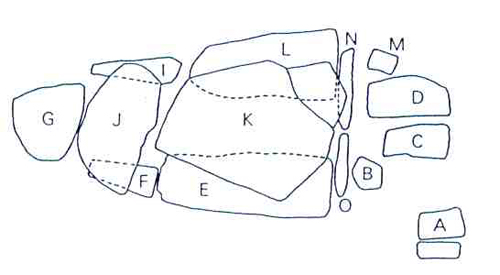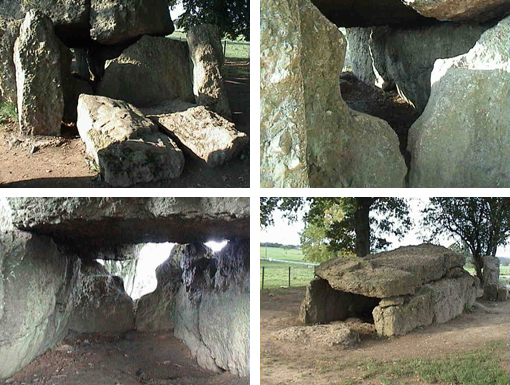The Dolmen of Wéris (aka northern gallery grave, Wéris I)

The Dolmen of Wéris (Wéris I) was already regarded as a monument by circa 1850 and this status was formalized when the Belgian State purchased the site for 1,200 Belgian Francs [some €30 in current day value] in 1882. Some excavations began from 1888 but it was only almost a century later that more scientific digs were carried out by François Hubert, archeologist of the National Service of Excavations ‘Service National des Fouilles’. These days the responsibility for the management and protection of the archeological heritage of southern Belgium lies with the Public Service of Wallonia – more specifically ‘La direction de l’archéologie’.

The Dolmen of Wéris is situated in a NNE aspect; and the total length is 10.8 metres. It comprises a rectangular burial chamber and a short, uncovered, antechamber in front of the entrance. The internal dimensions of the burial chamber are 6 metres long by 1.7 metres wide and 1.5 metres high. The walls of the burial chamber are four upright slabs (E, F, I, & L) supporting two capstones (J & K) that form the roof of the chamber. One of these capstones weighs an impressive 30 tonnes!
The two ‘port-hole’ slabs (N & O) having a U-shaped opening are kept in place by two vertical slabs (M & B). In front of these two ‘port-hole’ slabs two further slabs lie (C, D) on the ground and these delineate the antechamber. Menhir (A) is 2.84 metres in height and could have been a marking stone of some kind.

According to the archeologist François Hubert the sloping bank to the east of the dolmen might have stretched further than the dolmen itself. In this theory, the builders some 5000 years ago might have covered the dolmen with an earthwork or mound. The road east of the dolmen follows the path of an earlier Gallo/Roman road, but is somewhat higher than the original. This road is still called ‘Chemin des Romains’ – the Roman Road.
Excavations in the immediate vicinity of the dolmen of Wéris have yielded artifacts from three distinct periods: - the Neolithic, the transition from the Neolithic to the Bronze Age and the Gallo-Roman age. Human bone and teeth fragments confirm that burials of young and old people took place here. Other artifacts discovered are from the Seine-Oise-Marne (SOM) culture of Dolmen-Builders and include flint blades, tanged arrowheads, a scraper, part of a hammer-stone made from phyllite, and part of a polished axe.
The evidence that these megalithic graves were re-used during the transition from the Neolithic to the early Bronze Age is the discovery of pottery fragments of the All-Over-Ornamented beakers type, which are from the pre-Beaker period. The Gallo-Roman coins and pottery fragments also found near the dolmen of Wéris indicate the presence of Gallo-Roman people in that vicinity.






